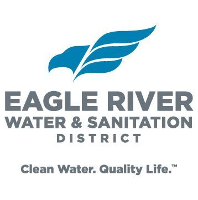HCT concludes bright start international conference, shaping the future of early childhood education – ZAWYA

Report on the Bright Start International Conference and its Contribution to Sustainable Development Goals
Executive Summary
The Higher Colleges of Technology (HCT) co-hosted the Bright Start International Conference, a hybrid event held in Abu Dhabi and London. The conference convened educators, researchers, and policymakers to advance early childhood and primary education. The event’s core themes of quality education, inclusion, technological innovation, and global collaboration directly support the United Nations’ Sustainable Development Goals (SDGs), particularly SDG 4, SDG 10, SDG 9, and SDG 17.
Advancing SDG 4: Quality Education
The conference demonstrated a profound commitment to SDG 4, which aims to ensure inclusive and equitable quality education and promote lifelong learning opportunities for all. The initiatives and discussions were aligned with several key targets of this goal.
- Target 4.2 (Early Childhood Development): The conference’s central focus was on advancing early childhood and primary education, directly contributing to the goal of ensuring all children have access to quality pre-primary education.
- Target 4.7 (Education for Sustainable Development): By launching initiatives to prepare children as “creative, empathetic, ethical global citizens,” the conference addresses the need for learners to acquire knowledge and skills for sustainable development.
- Inclusive Learning Environments: Sessions emphasized child-centered pedagogies and the importance of creating inclusive ecosystems, reflecting the principles of providing effective and safe learning environments for all children.
Promoting SDG 10: Reduced Inequalities
A significant focus of the conference was on reducing educational disparities, a cornerstone of SDG 10. The event actively promoted inclusion and social justice within educational frameworks.
- Equity and Access: A primary objective was to address shared global challenges, including equity and inclusion, ensuring that innovative educational models can be scaled globally to empower all learners.
- Culturally Adaptable Resources: The development of the world’s first AI Literacies Module for early childhood education, designed to be adaptable across cultures, is a key outcome aimed at reducing inequalities in access to future-driven skills.
Fostering SDG 9 (Innovation) and SDG 17 (Partnerships)
The conference served as a model for global partnership and a platform for educational innovation, aligning with SDG 17 (Partnerships for the Goals) and SDG 9 (Industry, Innovation, and Infrastructure).
- Global Multi-Stakeholder Partnership: The event was a collaboration between HCT (UAE), the Bright Start Foundation (Geneva), and leading academic institutions like UCL and Harvard. With participation from 47 countries, it exemplified a robust international partnership to achieve educational goals.
- Innovation in Education: The integration of future technologies was a central theme. The exploration of AI’s role in personalizing learning and the launch of the AI Play Forum highlight a commitment to leveraging innovation for educational advancement.
- Strategic Initiatives: The conference launched global initiatives that depend on continued international cooperation for success.
Key Outcomes and Future Initiatives
The conference produced tangible outcomes and established a framework for a global movement dedicated to reimagining early childhood education in line with sustainable development principles.
- Launch of the AI Literacies Module: A groundbreaking effort to address how children can thrive in the age of AI, preventing cognitive atrophy and fostering essential skills for the future.
- Establishment of the Voices of Children Pedagogy
 : A global initiative empowering children to become active contributors to their own learning and the future of education.
: A global initiative empowering children to become active contributors to their own learning and the future of education. - Creation of the AI Play Forum: A global think-tank established to explore the intersection of artificial intelligence, play, and early childhood development.
- Commitment to International Collaboration: The event reinforced the necessity of ongoing collaboration among educators, researchers, and policymakers to scale innovative, child-centered pedagogies worldwide.
Identified Sustainable Development Goals (SDGs)
-
SDG 4: Quality Education
The article’s central theme is the advancement of early childhood and primary education. It discusses creating an “innovative, inclusive ecosystem” for learning, developing new pedagogies like the “Voices of Children Pedagogy
 ,” and integrating technology such as AI to personalize learning. The entire conference and the initiatives launched are aimed at improving the quality and accessibility of education for young children globally.
,” and integrating technology such as AI to personalize learning. The entire conference and the initiatives launched are aimed at improving the quality and accessibility of education for young children globally.
-
SDG 10: Reduced Inequalities
The conference explicitly focuses on “promoting inclusion and social justice in early and primary education.” It addresses “equity and inclusion” as shared challenges that require international collaboration. The Bright Start Foundation’s mission to “promote equitable, high-quality learning worldwide” and ensure “every child — everywhere — has the opportunity to thrive” directly connects to reducing educational inequalities.
-
SDG 17: Partnerships for the Goals
The article highlights a multi-stakeholder, international collaboration. The conference was co-hosted by the Higher Colleges of Technology (HCT) and the Bright Start Foundation, bringing together “educators, researchers, and policymakers” from 47 countries. It involved partnerships with institutions like UCL and Harvard, demonstrating a global effort to “address shared challenges” and achieve common goals in education.
Specific SDG Targets
-
SDG 4: Quality Education
- Target 4.2: By 2030, ensure that all girls and boys have access to quality early childhood development, care and pre-primary education. The conference is “dedicated to advancing early childhood & primary education for children,” which is the core focus of this target.
- Target 4.4: By 2030, substantially increase the number of youth and adults who have relevant skills… for employment. HCT’s commitment to “preparing students and professionals with practical, future-driven skills” and the development of the “world’s first AI Literacies Module” are direct efforts to equip learners with skills relevant to a technologically advanced world.
- Target 4.a: Build and upgrade education facilities that are child… sensitive and provide… inclusive and effective learning environments for all. The focus on “child-centred pedagogies” and creating an “innovative, inclusive ecosystem” aligns with this target’s goal of creating suitable and inclusive learning environments.
-
SDG 10: Reduced Inequalities
- Target 10.2: By 2030, empower and promote the social… inclusion of all. The conference’s emphasis on “promoting inclusion and social justice” and addressing “equity and inclusion” as key challenges directly supports the goal of ensuring all children, regardless of their background, can participate in and benefit from quality education.
-
SDG 17: Partnerships for the Goals
- Target 17.16: Enhance the global partnership for sustainable development, complemented by multi-stakeholder partnerships. The conference itself is a model of this target, described as a “global live transmission linking two continents and participation from 47 countries,” involving academia (HCT, UCL), non-profits (Bright Start Foundation), and policymakers.
- Target 17.17: Encourage and promote effective public, public-private and civil society partnerships. The collaboration between HCT, a public higher education institution in the UAE, and the Bright Start Foundation, a Geneva-based global non-profit, is a clear example of a public-civil society partnership aimed at a common educational goal.
Implied Indicators for Measuring Progress
-
Indicators for SDG 4 Targets:
- The number of educational programs implementing new pedagogical models like the “Voices of Children Pedagogy
 .”
.” - The number of countries and educational systems that adopt the “AI Literacies Module for early childhood education.”
- The number of educators and professionals trained in integrating AI and child-centered pedagogies into their teaching practices.
- The number of educational programs implementing new pedagogical models like the “Voices of Children Pedagogy
-
Indicators for SDG 10 Targets:
- The extent to which new educational modules and initiatives are made “adaptable across cultures” to ensure equitable access and relevance.
- Measurement of the reach of these global initiatives to ensure they benefit children from diverse socio-economic backgrounds, thereby promoting social inclusion.
-
Indicators for SDG 17 Targets:
- The number of participating countries (stated as 47) in the international conference.
- The number of institutions (HCT, UCL, Harvard’s Project Zero) and stakeholder groups (educators, researchers, policymakers) actively collaborating on the initiatives.
- The establishment of ongoing global platforms like the “AI Play Forum” to sustain international dialogue and knowledge sharing.
SDGs, Targets, and Indicators Analysis
| SDGs | Targets | Indicators |
|---|---|---|
| SDG 4: Quality Education |
4.2: Ensure access to quality early childhood development and pre-primary education.
4.4: Increase the number of youth and adults with relevant skills for employment. 4.a: Build and upgrade inclusive and effective learning environments. |
– Implementation of initiatives like the “Voices of Children Pedagogy ” and the “AI Play Forum.” ” and the “AI Play Forum.”
– Global implementation and adoption rate of the “AI Literacies Module.” – Number of educators trained in child-centered and inclusive teaching methods. |
| SDG 10: Reduced Inequalities | 10.2: Empower and promote the social inclusion of all. |
– Development of educational resources that are “adaptable across cultures.”
– Geographic and demographic reach of the global initiatives to ensure equitable access for “every child — everywhere.” |
| SDG 17: Partnerships for the Goals |
17.16: Enhance the global partnership for sustainable development.
17.17: Encourage effective public, public-private and civil society partnerships. |
– Number of participating countries (47) and institutions (HCT, UCL, etc.) in the conference.
– The formal partnership between HCT (public institution) and Bright Start Foundation (non-profit) to co-host the event and launch initiatives. |
Source: zawya.com
What is Your Reaction?
 Like
0
Like
0
 Dislike
0
Dislike
0
 Love
0
Love
0
 Funny
0
Funny
0
 Angry
0
Angry
0
 Sad
0
Sad
0
 Wow
0
Wow
0




















































.jpg.webp?itok=0ZsAnae9#)


























